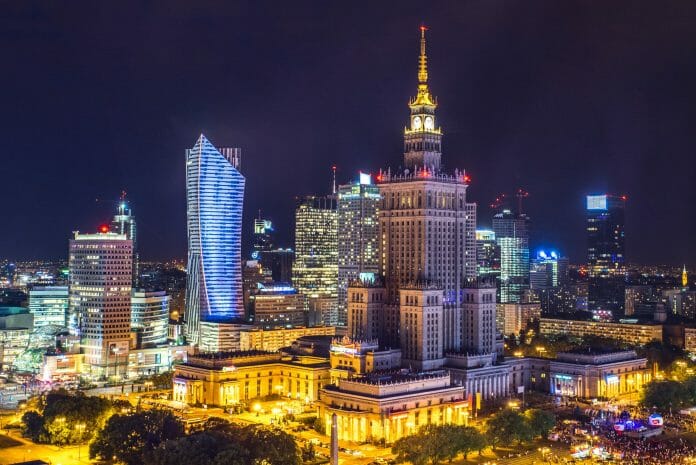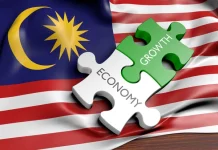During the outbreak, when access to loans is more difficult, promising businesses have a better luck on the stock exchange where investors take decisions based on a company’s potential and business model rather than on its past.
By Chief Executive Officer (CEO) of Warsaw Stock Exchange (GPW), Marek Dietl.
Economies and capital markets from around the world start a new decade of the 20th century in an air of uncertainty caused by the coronavirus outbreak. As controversial as this may sound, this uncertainty – fueled by subsequent unknowns like those regarding the virus mutations – proved beneficial for stock markets. It was the uncertainty factor which triggered movement on capital markets at long-unseen levels, with the Warsaw Stock Exchange (GPW) I run being a flagship example. In 2020, GPW has become the second stock exchange in Europe (EU) in terms of growth of liquidity.
The year 2021 will mark a jubilee for the Warsaw Stock Exchange. On April 16, we will celebrate the 30th anniversary of the inaugural session of the stock exchange, reactivated after a decades-long intermission marked first by war and then by communist captivity.
Numbers show best the big leap the Warsaw Stock Exchange has made over this period. It took 28 years for GPW to rise from the level of a marginal market to the group of developed markets. By comparison, the process took 55 years in the case of South Korea. GPW is an obvious leader in the region when it comes to capitalisation, with a lead of almost EUR12 billion over the Vienna Stock Exchange and clearly distancing other stock markets in Central and Eastern Europe (CEE). GPW is also among the leaders of the percentage value of the capital market in relation to GDP (25.4 percent). The capitalisation of companies listed on GPW amounts to more than EUR 235 billion. In comparison, three decades ago GPW closed the year 1991 with nine listed companies whose capitalisation equaled the value of today’s EUR0.04 billion only.
Today, the strength of Poland and of the entire CEE region lies to a large extent in the number of fast-growing technological companies. As they develop, they need capital. According to estimates of the Polish Development Fund (Polski Fundusz Rozwoju) and Dealroom co., start-ups from the CEE region reported an almost fivefold growth in terms of Venture Capital investments in 2015-2019, namely to US$1.8 billion. This is a confirmation that as large investors perceive an enormous technological and economic potential of the CEE region, they expect big returns soon.
It is worth noting that banks continue to finance 90 percent of the economy in our region. They choose predominantly companies from the so-called traditional sectors, while EU funds are earmarked first for the development of infrastructure. This restricts access to funds for new companies which increasingly look towards the capital market. It concerns in particular the so-called Covid-winners such as game producers as well as players in the medical and technological sectors. During the outbreak, when access to loans is even more difficult, promising businesses have a better luck on the stock exchange where investors take decisions based on a company’s potential and business model rather than on its past as banks do.
Central and Eastern Europe has the potential to grow much faster than the entire EU, but a substantial fragmentation of markets continues to be the main challenge: they are too small to individually compete against the markets in Western Europe. Integration is needed to attract first-rate institutional investors to our region. I place much hope in the EU’s Capital Markets Union which has supported the recovery of capital markets since 2014. Another opportunity is the Three Seas Initiative, which was established in 2015 and the goal of which is to strengthen cooperation among countries from between the Adriatic, Baltic, and Black seas in the fields of digitalization, energy, and transport.
I believe that GPW as one of the twenty-five best developed markets in the world should play the main role in promoting and supporting development of our region. For years, we have expanded cooperation among the stock exchanges of the Three Seas countries by organizing and engaging in events crucial to strengthening its attractiveness to investors. In late 2019, we launched the CEEplus index based on the value of the portfolio of the largest and most liquid companies listed on the respective stock markets from the Visegrad Group (V4) as well as Croatia, Romania, and Slovenia. Furthermore, in September 2020, we organised the Three Seas Stock Exchanges Conference under the honorary patronage of the President of the Republic of Poland Andrzej Duda.
The growing significance of GPW finds confirmation in the data released by the Federation of European Securities Exchanges (FESE). GPW is ranked second among Europe’s stock markets as regards liquidity growth measured by the value of shares traded on the order book. Also, in terms of liquidity measured by the turnover of portfolios, we have overtaken some of Europe’s stock exchanges. Along with other developed markets like Switzerland, we are also in the lead of European stock exchanges regarding the turnover value. For GPW, it has grown to the level of 52.5 percent in the third quarter of 2020 as against 33.2 percent in the corresponding period in 2019.
The reason I am highlighting all this is because there are many companies in the region which are mature enough to enter the public market – I mean both the so-called unicorns as well as those with a potential to become unicorns in the next few years. GPW is a perfect place for them to gain capital and continue their development. WIG20 as the crucial index of the Warsaw Stock Exchange is becoming like those reflecting the structure of economies of the United States or South Korea where technology is in the focus. As of last October, we are also the world leader in terms of the number of listed companies from the video game production industry, a category in which we moved ahead of the Tokyo Stock Exchange. The total capitalisation of Poland’s gamedev sector amounts to more than USD 10 billion.
The fact that Poland’s capital market has been classified among the group of developed markets attracts the attention of global investors as best exemplified by the debut of Allegro (over EUR2 billion) – the biggest for more than a decade within the CEE region and one of the world’s biggest last year. High valuations, the presence of foreign technology funds, and the continued liquidity of trading in shares only confirm that the GPW is a fully developed market.
The Warsaw Stock Exchange has one more advantage – it offers access to broad and diverse investment capital at a much lower expense than in the case of a debut on big foreign stock markets. The costs on GPW are several times lower than on the LSE, Nasdaq, or Euronext.
The accumulation of potential, appetite for success, innovative approach, and attractive financial conditions constitute a solid foundation for capital markets in the region in uncertain times.









